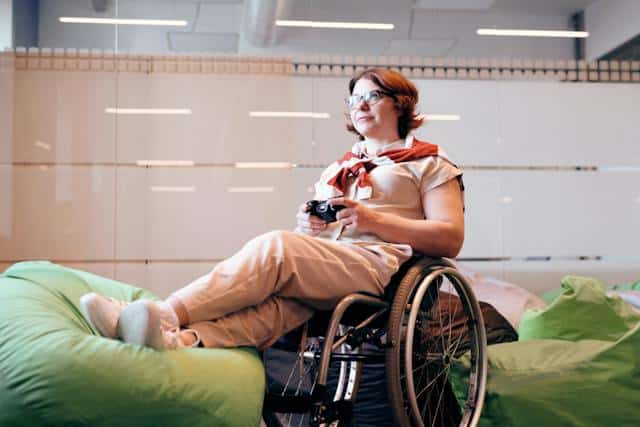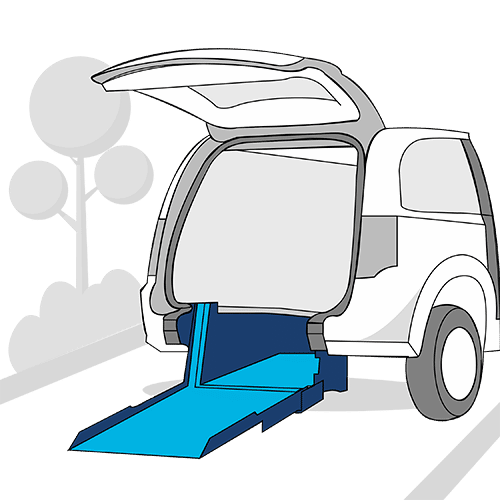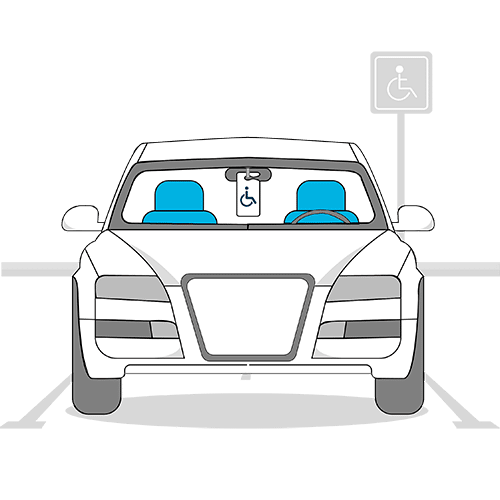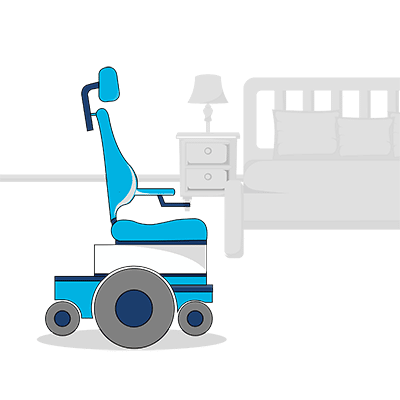If you’re researching wheelchair insurance you may be wondering whether it’s better to include it in your home and contents insurance cover or to get specialised wheelchair-specific insurance.
In this post, we’ll compare the benefits and limitations of these two options so you can make an informed decision on which insurance cover is better for you and your wheelchair.
In this article
Home insurance contents cover for wheelchairs
Home and contents cover is a type of insurance that financially safeguards personal belongings and possessions within your home (contents) plus the house itself and other structures within the property boundaries (home).
It’s typically available to homeowners and tenants, though tenants usually choose cover for the contents of the home only given they don’t own the property. Either way, insurance providers may set a maximum limit on the value of contents covered under this policy.
Some providers will recognise wheelchairs as part of a home’s contents – usually listing it as a ‘specified portable valuable’ – and provide insurance cover for it as part of the policy.
Though you may be able to insure your wheelchair under home contents cover, it’s crucial to understand this type of insurance is typically built to cover general contents. So, it may not provide adequate coverage for specialised equipment like wheelchairs.
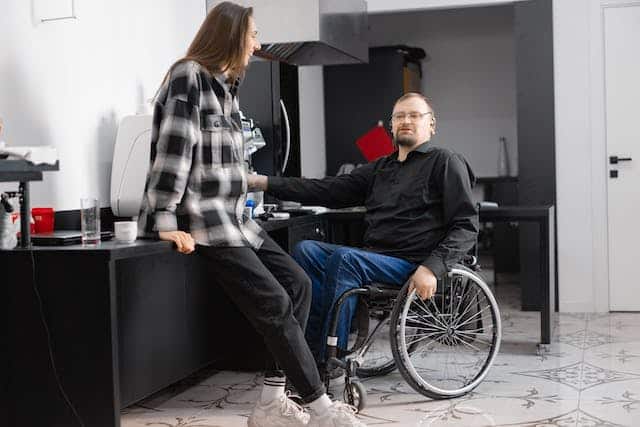
Pros and cons of home insurance contents cover
Some people opt for home contents cover over specialised insurance for their wheelchair because they find it to be more convenient and potentially more cost-effective. After all, having your wheelchair covered alongside your home contents insurance means everything is in one place. You don’t have to manage separate insurance policies for your home assets and your wheelchair.
The cons
Nevertheless, there are several limitations on this type of coverage that you should be aware of:
Cover outside the home
Some home contents cover options don’t cover your wheelchair if it’s used outside of your home. Look at the policy wording closely. If something happens to your chair when you’re at the park or shopping, for example, it might not be covered or there might be a range of terms and conditions you must meet to successfully make a claim.
Coverage amount
Home contents insurance usually has a limit on how much the provider will reimburse you for each item at claim time. If your wheelchair is really expensive, the insurance might not cover its full cost.
Accidental damage
Some home contents insurance policies don’t cover accidental damage. So, if your chair gets damaged by accident, you might have to pay for repairs yourself.
Claim process
Making a claim for a wheelchair under home contents insurance can often be more complicated. Why? The insurance company might not be used to dealing with wheelchairs specifically, which could make the process slower.
Excess payment
Most insurance products have an ‘excess’ payment. This is where you have to pay a certain amount of money yourself before the insurance pays the rest. Because home contents cover doesn’t specialise in wheelchairs, their excess amount on wheelchairs may be more than that of a specialised insurance provider.
Specific risks not covered
There might be specific risks related to wheelchairs that aren’t covered. For example, if your chair’s battery system gets damaged it might not be included in the policy.
The pros
As mentioned up front, some people may prefer to have just the one insurance policy to cover home, contents and wheelchair, rather than one policy with one provider and one with another. That does mean that if your wheelchair is damaged or stolen from within your home along with other contents then you’ll only make one claim with one insurer (if you’re covered for that).
Whether this is enough to justify folding your wheelchair into home contents insurance cover is an individual decision.

Specialised wheelchair insurance cover
Specialised insurance, like the kind of wheelchair insurance offered by Blue Badge Insurance, is designed specifically to cater to the needs of wheelchair users. This type of insurance provides comprehensive coverage that goes beyond the limitations of general home contents cover.
In the event of theft, loss, or irreparable damage to your wheelchair, this insurance typically covers the cost of a replacement. It may also offer cover for necessary repairs to your wheelchair to make sure it functions perfectly.
The pros
Specialised wheelchair insurance is designed just for wheelchairs, covering things that general home contents insurance might not. Here are the benefits of having it:
Legal liability cover
Legal liability cover is a type of insurance that protects you in case you accidentally cause injury to someone or damage their property with your wheelchair. At the time of writing, Blue Badge Insurance provides $10 million legal liability cover, which you may not have if you insure your chair under your home contents.
Cover outside the home
Unlike some home contents insurance, specialised wheelchair insurance usually covers you when you’re out and about. If something happens to your wheelchair outside your home, with the right insurer you’re still covered.
Lower excess for wheelchair claims
The excess (the amount you pay upon claiming before insurance kicks in) might be lower with specialised insurance when you make a claim for your wheelchair, compared to a general home contents policy. At the time of writing, Blue Badge Insurance has a standard basic excess on wheelchairs from $250.
Cover for repairs and replacement
This insurance often covers the cost of fixing your wheelchair. If it can’t be fixed, they might replace it. This can include coverage for specific parts or custom features of your chair. Blue Badge provides a two-year ‘new for old’ replacement in the event that your wheelchair is written off from a claimable event, like theft or a collision. (The accidental damage or theft must have occurred within two years of original purchase date)
Quicker response times
Because specialised wheelchair insurance focuses on wheelchairs, they might handle claims faster and understand the urgency of getting your chair fixed or replaced. They’ll also likely have stronger disability equipment industry connections, helping you turn your repair or replacement around faster.
Travel cover
If you travel, some specialised policies cover your chair if you cross states or go overseas. This is great for peace of mind on holidays or trips. Blue Badge Insurance, for instance, provides Australia wide cover and up to 21 days of overseas cover, which can be extended at a cost. PS: Planning to head off any time soon? Check out our top tips for travelling with a disability and why you need wheelchair travel insurance.
Cover for authorised persons
Some specialised insurance providers allow cover for anyone the customer authorises to use their wheelchair (we do). This means repairs are covered if a friend family who you’ve stated may use your chair gets into an accident.
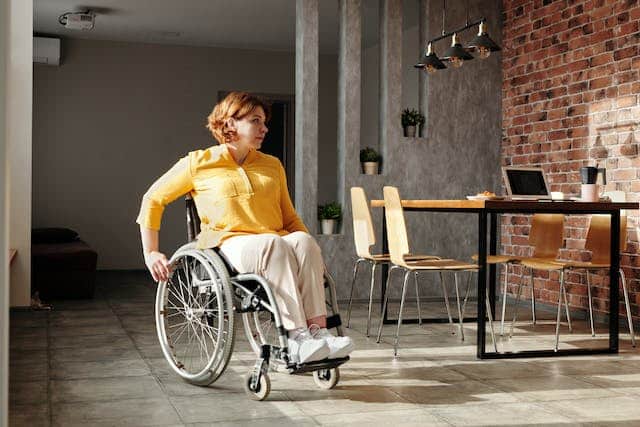
The cons
As mentioned in the home and contents section, some people may prefer to have just the one policy to cover wheelchair, home and contents, rather than their wheelchair being covered with one insurance provider and home/contents with another.
As for whether it’s more cost-effective, that’s debatable. How do you separate the portion of premium that covers the wheelchair? Then what value does it provide versus specialised cover?
Yes, going with two policies does mean if your wheelchair is damaged or stolen from within your home along with other contents then you’ll be making two claims with two insurers. Is that enough reason to bypass specialised insurance cover for your wheels? Up to you.
Verdict: specialised vs home insurance contents cover
While Australian home contents cover can provide general protection for your personal belongings within your home, it may not fully address the specific needs of wheelchair users. However, you might find out that’s suitable for your needs.
For comprehensive coverage, specialised wheelchair insurance offers a tailored solution that caters to the unique requirements of wheelchair users. With the industry knowledge and support to back it up.
Remember, when considering insurance options, carefully review policy terms, coverage limits, and exclusions to ensure your insurance meets your needs.
Become insurance-wise
Want to become even more insurance savvy? Check out these must-read wheelchair and other disability-specific insurance articles:
- 6 Questions to Ask When Getting Insurance for Your Wheelchair
- Do Insurance Companies Discriminate Against People with Disability?
- Is Your Mobility Equipment Properly Insured?
- Under Insurance – Is Your Car Really Covered?
- Wheelchair Travel Insurance and Why You Need It
- Can You Cover Disability Modified Cars with Insurance?
- 5 Ways Blue Badge Insurance Differs from Traditional Insurers

Wheelchair insurance tailored for you
Blue Badge Insurance is Australia’s first disability and independence insurance specialist. We understand the needs of people living with disability and pride ourselves in providing cost-effective cover and thoughtful service.
As we’ve explained in this article, a wheelchair insurance plan can help you pay the costs of repairing or replacing your wheelchair if you’re in an accident or it gets damaged or stolen. We also offer disability parking permit holders up to 25% off comprehensive disability car insurance and 15% off pet insurance (or 25% off if it’s an Assistance Dog).
Click below to get a quote today.


